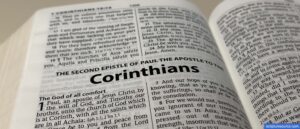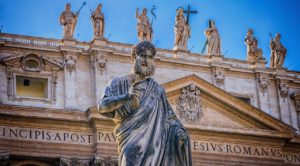Overview of the Book
The Epistle of James is classified as one of the general epistles1, addressed to a wider audience2 rather than to a specific person or a local church community. Many have given much importance to the epistle of James. For some, it is ‘the wisdom literature of the New Testament’ because it exhorts moral conduct and gives practical instructions to shape genuine Christian character. For others, it is like the Book of Amos because it addresses issues like social injustice and inequality. The author gives practical advice on multiple issues including anger and quarreling, showing favoritism, controlling the tongue, boasting about oneself, trials and temptations, wisdom and folly, faith and works, and regarding prayer and patience.
Title of the Book
The book was titled, according to early New Testament documentation, as “The epistle of James.” However, some Biblical scholars call it as as ‘James’ or ‘the book of James’ or ‘the letter of James.’
Authorship of James
As per the opening verse of the epistle, the author introduces himself as James, a servant of God, and of the Lord Jesus Christ (James 1:1). There were three James who were closely associated with Jesus during His earthly life and ministry. They are as follows:
- James – one of the twelve Apostles of Christ Jesus. He was the son of Zebedee and the brother of John (Matthew 4:21, Mark 1:19; Luke 5:10, Acts 1:13). According to Acts 12:2, James, the brother of John, faced martyrdom in AD 44 under Herod’s rule. However, it seems, this epistle was written at a much later date
- James – one of the twelve Apostle of Jesus Christ. He was the son of Alphaeus (Matthew 10:3; Mark 3:18; Luke 6:15; Acts 1:13). Also known as James the Less. If the epistle was written by him, he would have introduced himself as an apostle of Lord Jesus Christ.
- James – the half-brother of Jesus (Matthew 13:55; Mark 6:3; Galatians 1:19). James did not believe in Jesus while He was with them (John 7:5). However, after the resurrection, he believed in Jesus and joined His Disciples (Acts 1:14). Later, Jesus appeared to him (1 Corinthans 15:7). Bible historians indicate that he became one of the most influential leaders among Christians in Jerusalem (James 1:1a)
It is hard to identify with certainty which of the above-mentioned James wrote the epistle, since there is no title added to the author’s name in the form of a family name or father name or location name. Nonetheless, in the light of the above description, we can infer that the epistle of James is written by James, the brother of Jesus, who was also a well-known leader of the Church in Jerusalem (Acts 15:13-21; 21:18; Galatians 1:19).
Recipients of the Epistle
James 1:1b states that the epistle is written “to the twelve tribes scattered among the nations,” which indicates that the epistle is originally written to Jewish converts as well as devout Jewish Christians living beyond the borders of Palestine. They were scattered in the neighboring countries which included Phoenicia, Cyprus, and Antioch due to persecution caused at the time of Stephan’s martyrdom (Acts 11:19). These Christians maintained a close affiliation with the Christians in Jerusalem.
Date of writing
Many Biblical scholars believe that the epistle is written between 45 and 49 AD.
Purpose of Writing
The key purpose of writing this epistle is to correct the early Jewish Christian communities living outside Palestine who did not live out their faith-life adequately in good works. The epistle is mainly written to:
- encourage Jewish Christians who were going through various trials due to their newly found faith
- reassure the comfort and hope to those who sustain suffering due to the test of their faith
- encourage readers to endure trials joyfully in order to be benefitted out of it (James 1:2-11)
- re-emphasize the right teachings regarding their faith in Jesus and the salvation that comes through His atoning death
- exhort the readers about the practical side of their faith
- instruct the readers to focus on righteous living based on good deeds
Major Teachings of the Epistle
The entire epistle revolves around the theme of “True faith and godly living.” This is the highlight of the epistle. James carefully dealt with the topics on ‘faith and deeds,’ and he said, “faith without works is dead” (James 2:20). The author also addresses several other major teachings, such as:
- Trials and temptations (James 1:2-18)
- Faith and works (James 2:14-26)
- Earthly and heavenly wisdom (James 3:13-18)
- Christian friendship (James 4:1-12)
- Perseverance in suffering (James 5:7-11)
- Effective praying (James 5:13-18)
General Outline of the Epistle
Chapter One
- Greetings (James 1:1)
- Trials in Christian Life (James 1:2-18)
- Face trials as means of spiritual growth (James 1:2-4)
- Pray for wisdom to endure trials (James 1:5-12)
- Trial is different from Temptation (James 1:13-18)
- Exhortation to listen to the Word and Live out a righteous life according to it (James 1:19-27)
- [For example: “Religion that God our father accepts as pure and faultless is this: to look after orphans and widows in their distress and to keep oneself from being polluted by the world” (James 1:27)]
Chapter Two
- Christian Attitude of Exercising Impartiality and Fairness (James 2:1-13)
- Professing faith and Demonstrating it (James 2:14-26)
Chapter Three
- Part I – Avoiding Pitfalls for Genuine Christian Living (James 3:1-18)
- Sinfulness of an unruly tongue (James 3:1-12)
- Worldly Wisdom (James 3:13-18)
Chapter Four
- Part II – Life as Christians (James 4:1-17)
- Sinful Behavior (James 4:1-6)
- Submit to God – the Righteous Judge (James 4:7-10)
- Sinfulness in speaking against a Brother (James 4:11-12)
- Presumptuous and Conceited Living (James 4:13-17)
Chapter Five
- Self-centered Wealth (James 5:1-6)
- Virtues for a Fruitful Christian Living (James 5:7-18)
- Patience in Suffering (James 5:7-11)
- Exercising Honesty (James 5:12)
- Effective Praying (James 5:13-18)
- Conclusion: Reclaiming the Wandering (James 5:19-20)
James' Spiritual Journey
Carry out a special study on the astounding spiritual pilgrimage of James, the brother of Jesus, from John 7:5 to Acts 1:14.
What happened in James’ life between John 7:5 and Acts 1:14?
- James began his spiritual pilgrimage right from the point of his disbelief. He did not believe in Jesus as the long-awaited Messiah
- somewhere in the middle of his life, he realized and believed that Christ, the Anointed One of the living God, is his own brother – Jesus
- James soon accepted Him as the Lord and Savior of his life
- then dedicated his life to carry out the very purpose of his Lord and Savior’s mission
- later, he took up the challenges of leadership when the Church in Jerusalem faced leadership crises due to persecution under various circumstances, such as socio-cultural (Grecian), religious (Jewish), and political (Roman)
- finally, embracing death by martyrdom in AD 62 because of his faith in Christ Jesus.
Elaboration (of the superscripts)
The term ‘Epistle’ is derived from the Greek word Epistole, which simply means letter or message. The epistles are not letters that just contain information, but they are teachable information and doctrines for the New Testament Church. There are 21 epistles in the New Testament (Romans to Jude). All of these epistles are written by either Apostles (Peter, John and Paul) or Jesus’ brothers (James and Jude). Apostle Paul’s epistles were named after the recipients, but the general epistles are known by their authors’ name.
“To the twelve tribes scattered among the nations” (James 1:1), especially who are scattered, according to Acts 11:19, to Phoenicia, Cyprus, and Antioch.



